
My Mille-Feuille Nabe in a rice cooker is a total game-changer for anyone who has limited space in their kitchen or wants a set-it-and-forget-it meal.
The name “Mille-Feuille Nabe” comes from two parts: mille feuille, which means “a thousand layers” in French (think of the classic layered pastry), and nabe, the Japanese word for “hot pot.” This dish layers napa cabbage and thinly sliced meat into a beautifully stacked pattern, then simmers everything in a light, flavorful broth.
While it’s often prepared in a large pot on a stove, using a rice cooker can be convenient – especially if you’re cooking for one or two people. Just layer the cabbage and pork (or just toss it in if you don’t care about the aesthetic; usually I don’t!), pour in your broth, and hit the cook button. Once it’s done, you get tender cabbage, juicy pork or beef, and flavorful broth. Plus, it’s all made in one bowl, so cleanup is easy.
Hot Pot Add-Ins
The best part about hot pot is how customizable it is. Want a vegetarian version? Use tofu. Want it gluten free? Use gluten-free glass noodles.
Here’s a list of ingredients you can mix and match. Start with my recommended basics, then customize depending on what you have:
Must-haves (base ingredients):
- Napa cabbage
- Thinly sliced pork belly or beef
- Mushrooms (Enoki, shiitake, shimeji, etc.)
Great additions:
- Thinly sliced onions
- Julienned carrots
- Mizuna or spinach
- Leeks or green onions
- Fish cakes or kamaboko
- Ramen, udon or glass noodles
- Tofu or egg
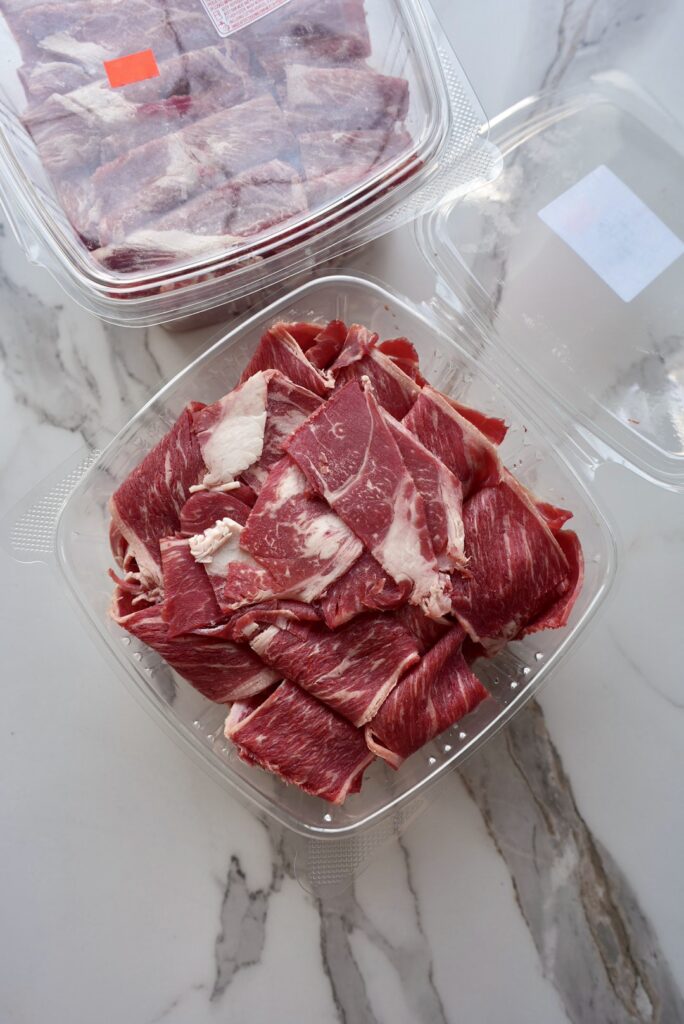
Japanese Nabe Dipping Sauce Options
When it comes to dipping sauces for Mille Feuille Nabe, I almost always reach for ponzu (pictured). It’s a citrusy soy sauce that’s slightly tangy. But use whatever you like!
Japanese hot pot sauces are typically lighter and more delicate than other dipping sauces (like the thicker ones used in Chinese or Korean hot pots), so they’re meant to complement rather than overpower the dish. Here are some great options you can mix and match:
Other Japanese-Style Sauces:
- Sesame sauce (goma dare)
- Soy sauce + a splash of rice vinegar or yuzu
- Yuzu kosho + soy sauce
Customizable Add-Ins:
- Grated daikon
- Shichimi togarashi (Japanese chili powder)
- Chopped green onions or grated ginger
- Raw egg yolk
Recommended Rice Cookers
Do I need to have a fancy rice cooker to make this meal? NO!
Just like anything, generally, the higher the quality, the better. But you can make my rice cooker meals in a cheap rice cooker, too!
Click the rice cooker photos to see my top picks, from $20–$200! I use the Tiger 5.5-cup model shown. About 1/2 cup of Japanese short- or medium-grain rice makes 1 serving.
Key Features to Look For in a Rice Cooker:
- Steaming Basket or Tray: Allows you to steam vegetables or cook other ingredients while the rice cooks.
- Multiple Cooking Functions: Ensure it has settings for steaming, slow cooking, and possibly even baking.
- Non-Stick Inner Pot: Makes cleaning easier and prevents sticking.
- Timer and Keep Warm Function: Useful for planning meals ahead of time and keeping them warm until you’re ready to eat.
What Type of Rice to Use
Choosing the right type of rice can be confusing, especially with so many varieties available. In Japanese cooking, however, Japanese short-grain or medium-grain rice is almost always the go-to choice.
Short-grain rice, often labeled as sushi rice, is particularly prized for its soft and chewy texture, which pairs beautifully with traditional Japanese dishes. Medium-grain rice is a great alternative if short-grain isn’t available (I actually almost always use medium-grain myself because it’s generally cheaper where I live!).
Obviously with this dish, your rice cooker will be occupied with the Nabe. I recommend making rice and storing it (in the fridge or freezer) before hand, or using these instant rice packs here. Just heat it in the microwave for 60-90 seconds and you have incredible, sticky white rice.
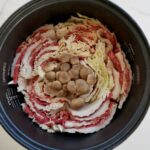
Nabe (Japanese Hot Pot) in a Rice Cooker
- Total Time: 40 minutes
Description
Mille-Feuille Nabe is a Japanese hot pot dish where napa cabbage, mushrooms, tofu, and thinly sliced pork belly are layered in a circular arrangement and simmered in a light broth.
Ingredients
My rice cooker is a 5.5 cup one that will make up to 2 servings of Mille Feuille Nabe, but any size rice cooker can make Mille Feuille Nabe – just adjust the ingredient amount accordingly; however, if you don’t care to make it look beautiful with the Mille Feuille layered look, you can just toss in all of your ingredients and my rice cooker size could feed up to 4 people if you double the recipe.
Don’t stress too much about the size of your rice cooker! Just add the ingredients and cook.
Mille Feuille Nabe Ingredients:
- 1/2 head of large napa cabbage, plus two-3 large leaves
- 1 lb pork belly, thinly sliced (I purchase mine at the Asian Market and it comes thinly sliced)
- 5 oz. shimeji mushrooms (substitute for any mushroom), trimmed from root
- 3 tablespoons soy sauce
- 1 tablespoon ginger, thinly sliced
- 1 tablespoon hondashi
- 1 cup water
- Other additional add-ins you can toss in: tofu, thinly sliced carrots, noodles, etc.
Ponzu Dipping Sauce:
- ~3 tablespoons ponzu (per person)
- Green onions and chili crisp for garnishing (optional)
Instructions
- Cut your napa cabbage in half, and then cut again into quarters. Do not cut off the core or stem yet.
- In each of the cabbage leaves, insert one layer of pork belly. Repeat for each cabbage leaf until you reach the top, ending with a cabbage leaf. Repeat with the other napa cabbage quarters.
- Cut the core/stem off of each napa cabbage and then proceed to cut the cabbage/pork belly slices into fourths.
- Beginning layering the cabbage/pork leaves (showing the alternating colors), starting from the outer section of the pot and going in. Using the thicker/harder cabbage leaves on the outside rim section enables more even cooking. Squeeze the cabbage and pork tight to leave room in the center.
- In the center, add your shimeji mushrooms on top. Drizzle your soy sauce over the hot pot, along with the ginger, hondashi, and water.
- Turn on your rice cooker to begin cooking your Nabe. This can take anywhere between 15-20 minutes depending on your rice cooker. Cook only until the meat is browned.
- Prepare your dipping sauces for each person in a small bowl. Enjoy your nabe with white rice or alone.
- Prep Time: 20 minutes
- Cook Time: 20 minutes
Nutrition
- Serving Size: 2


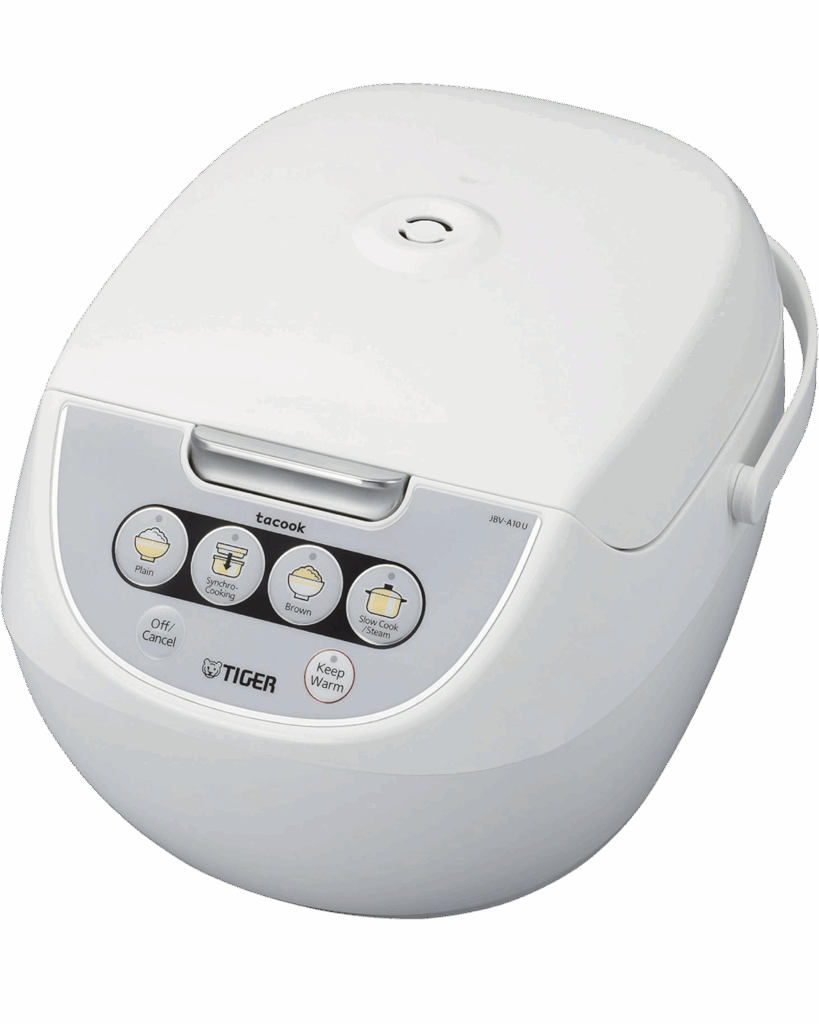
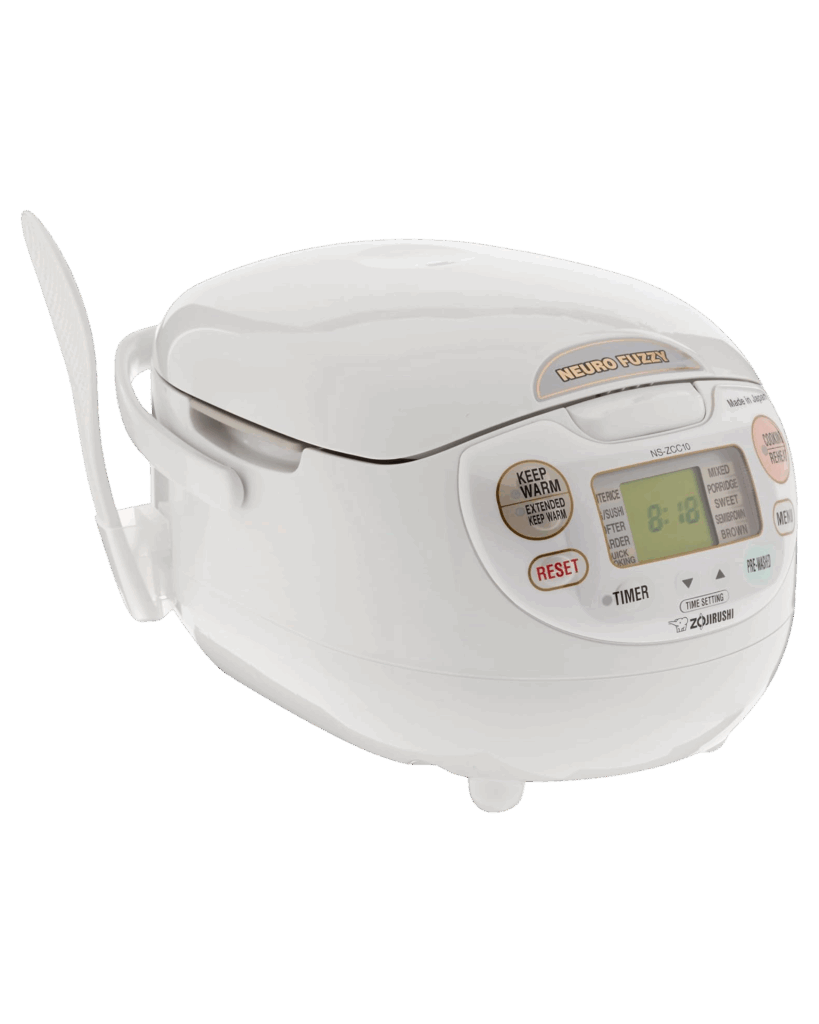

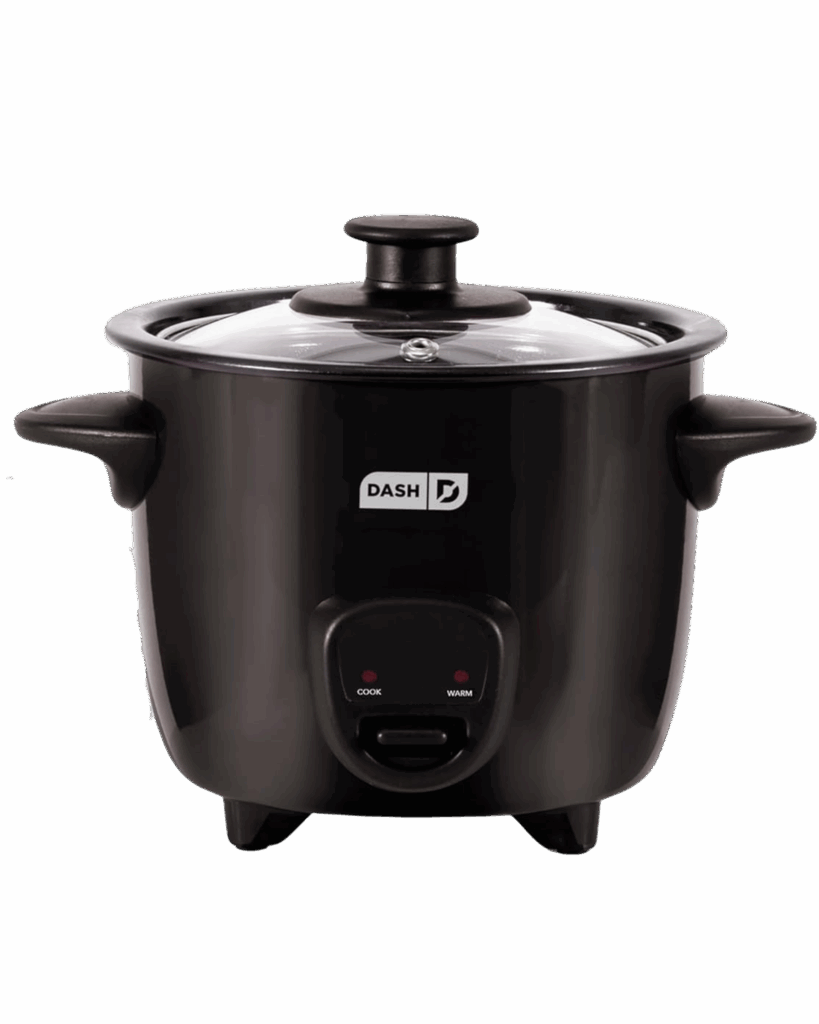




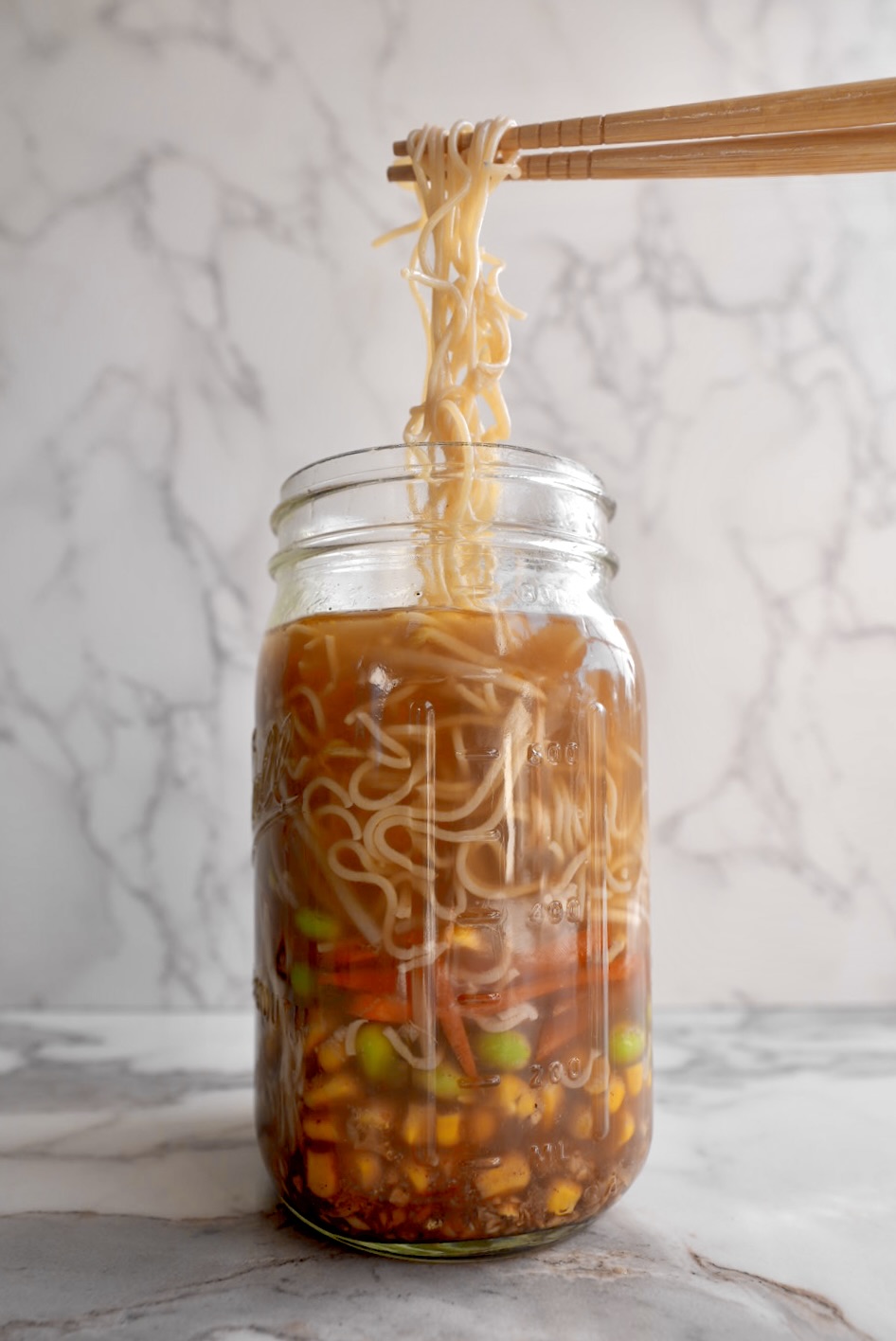
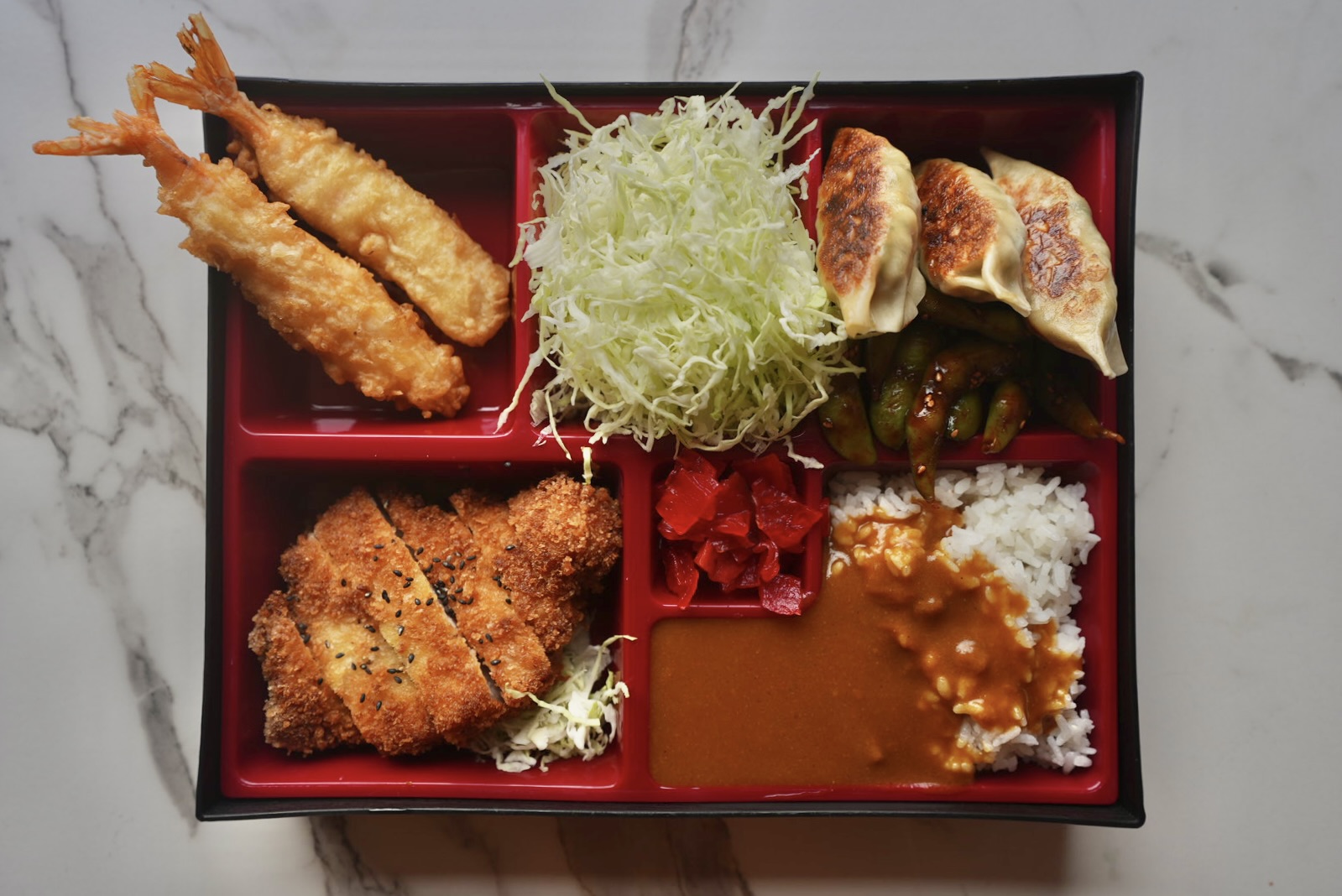
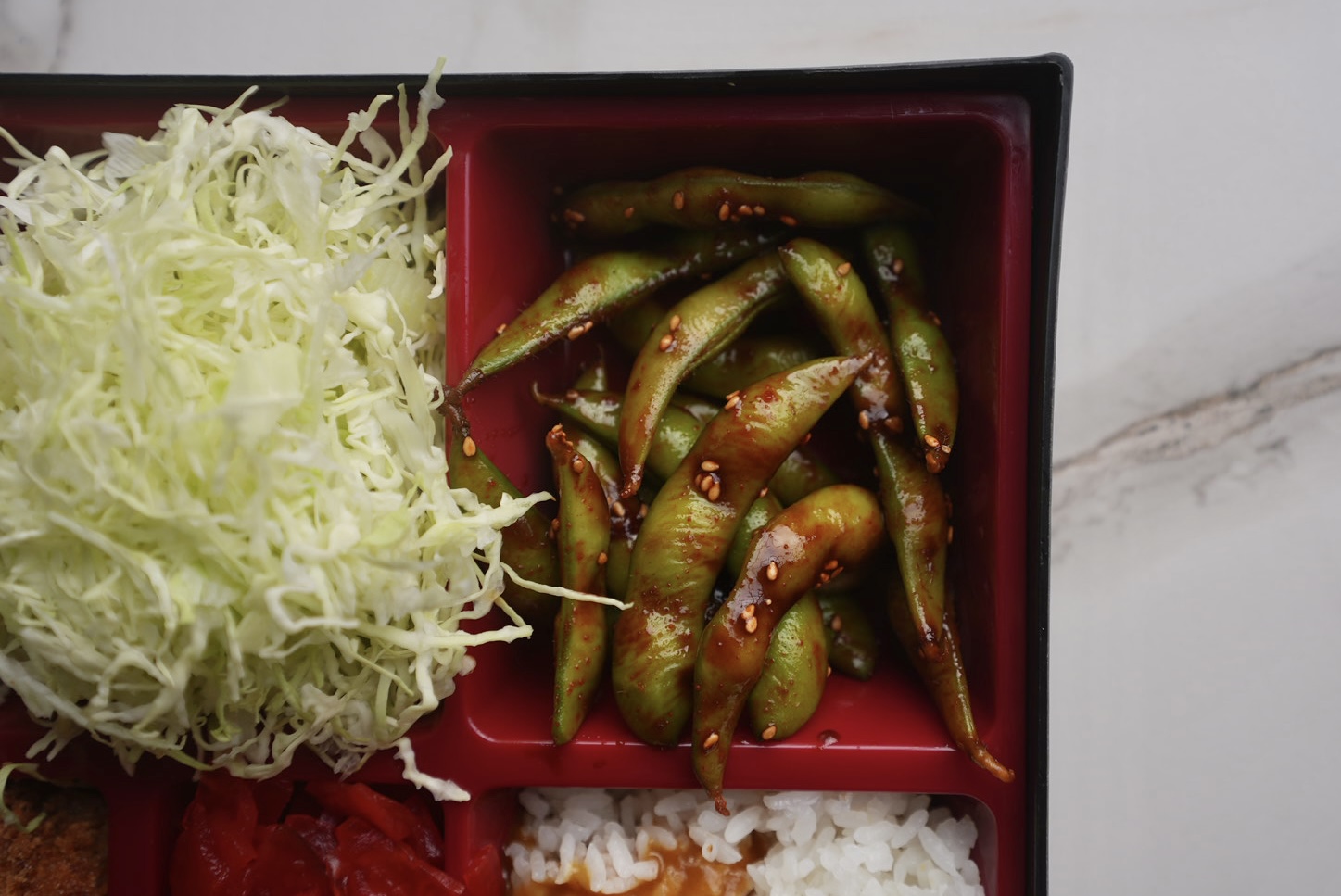
What setting would you use for the zojirushi rice cooker? Since it does not have a cook setting?
Hi Jessy, just use the regular button you use to cook rice!
That is so cool you can do hot pot in a rice cooker! I’m wishing I had a bigger one now haha.
Seriously it’s the best! Time to get a giant rice cooker!
All the vegetables stayed tender yet crisp and the broth picked up great flavor.
Hi Vivian – I’m glad you loved it 🙂 Thanks for sharing!